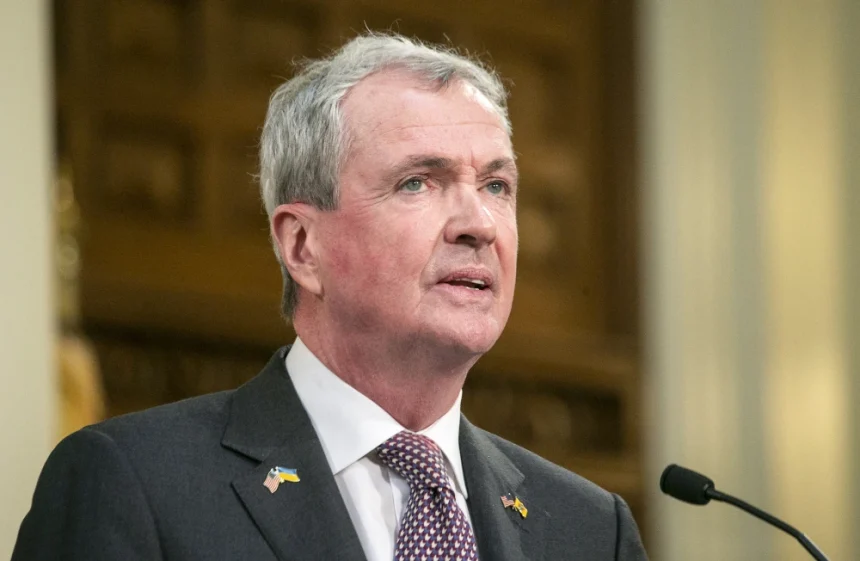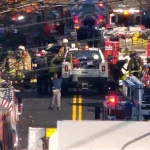New Jersey’s governor issued a drought warning to residents on Wednesday. He noted that the state could implement new restrictions on the water level used, which would be mandatory for everyone if the situation worsened.
A record dry spell has led to New Jersey’s driest conditions in nearly 120 years, prompting a staggering increase in the number of wildfires, state administrators said at a news conference.
Governor Phil Murphy has disclosed that the figures from the New Jersey Forest Fire Service have shown that the agency has responded to 537 blazes since early October; according to him, the fire incidents have led to the burning of thousands of acres. He noted that the reported fire incidents have now been more than what was reported in the same period last year by 500.
The governor has asked the residents to take the drought warning seriously. He urged them to reduce their consumption without any government legislation. He explained that all residents have the duty to conserve water in the state as the situation has become very important.
Tim Eustace, executive director of the North Jersey District Water Supply Commission, noted that the state has not gone too far to the extent of declaring a water emergency in the city, which will lead to restrictions on the use of water especially in the case of outside use of the water and nonessential outdoor water use.
Eustace has always been against using drinking water to water lawns, arguing that it is a heavy waste of resources.
It was disclosed that his commission provides water to about one-third of New Jersey, and its main reservoir, the Wanaque Reservoir, was at 45% capacity Wednesday. Another major reservoir in the state, the Manasquan Reservoir, was at 51% capacity, and the Passaic River—which supplies drinking water was at about 14% of normal levels, though that’s still enough to meet demand, officials said.
New Jersey American Water, which has been serving at least 2.9 million people in the state, on Wednesday issued a conservation notice to its customers; the notice issued told the customers that the conservation was mandatory, which shows how urgent it has become. Mark McDonough, president of New Jersey American Water, stated that it does not have the power to enforce the directive.
McDonough stated that it would be important for the residents to restrict themselves in the situation they can. He further noted that he does not have the authority to issue tickets or go door to door asking people if they’re watering their lawns. He also stated that there could be a tremendous impact if the customers adhered to the conservation notice that was issued.
The governor noted that the winter forecast predicts more dry weather. However, the National Oceanic and Atmospheric Administration’s seasonal outlook predicted above-average temperatures with equal chances of precipitation above or below-average levels.
According to the Southeast Regional Climate Center, which collects precipitation data across the country, the dry conditions plaguing New Jersey are part of a broader drought across the Northeast. In October, cities such as Newark, New Jersey; Wilmington, Delaware; and Norfolk, Virginia, recorded no rain at all. Philadelphia and Washington, D.C., set records for the number of consecutive days without measurable rainfall.
The data also shows that in the entire US, October was one of the driest months on record, as stated by the data from NOAA. Drought Monitor data indicates that more than half of the continental U.S. is experiencing some level of drought, including 56% of the Northeast.
State climatologist Dave Robinson said rain is usually distributed evenly over the months in New Jersey. However, some areas have not received measurable rainfall in 40 days, the first time since records began about 150 years ago.
Robinson said that the country has had a longer drought but that despite the exceptional dry weather, they have seen situations in the past.
He explained that in October, New Jersey often experiences heavy rain from the remnants of hurricanes or tropical storms or from Nor’easter low-pressure systems that develop in the mid-Atlantic.
Robinson noted this fall, it was surprising to see that they were shut out of both; he said that instead, the state has been experiencing a ridge of high pressure, which has taken over New Jersey and other parts of the Northeast for weeks.
Robinson noted that there was no major storm to punch the ridge in the chest and knock it out. According to him, It has been more of a slow, exasperating process. He stated that there are some signs the centre part of the country, which had been quite dry, is getting wetter. it seems to be shifting slowly eastward he said.
It has been disclosed that Novermber has been the 12th consecutive month when New Jersey has seen a constant high rise of temperature above the average level. It was noted that a warmer atmosphere can worsen drought and increase the likelihood of extreme rainfall.
Robinson stated that a more energized, warmer climate system could hold more atmospheric moisture. He further stated that if one could not tap that moisture source, the individual would get warmer conditions that can exacerbate drying and lead to more drought. Robinson further states that the system has become more variable.
Shawn LaTourette, the state’s commissioner of environmental protection, stated that given the amount of persistent dry weather in New Jersey since mid-August, ending the drought conditions would require several months of at least average rainfall, if not substantially more.
The governor also stated that about a quarter of the rail was witnessed in some of the areas on Sunday but stated that the rain was not enough or close to it.
It is not the first time that the state has been in such a condition. The state had last declared a drought emergency in March 2002, but it was lifted in January 2003. The state’s last drought was witnessed in 2016. It had lasted for mother six months, the commissioner disclosed.
Greg McLaughlin, leader of the New Jersey Forest Fire Service’s Office of Forest and Natural Lands, said that conditions on the forest floor have come to 748 out of 800 on a scale that measures material dryness. McLaughlin said that the Forest Fire Service has never seen these numbers in our 118-year history. “The impact of this dryness on wildfires cannot be overstated.”
Along the New York-New Jersey border, the Jennings Creek Wildfire continued to burn Wednesday and was about 30% contained. It has burned at least 5,000 acres across the two states. On Saturday, an 18-year-old New York Parks employee was killed by a falling tree while he was battling a fire in New York’s Orange County.
“Murphy stated that they have been delighted and incredibly grateful for the service and willingness to protect the people of both New York and New Jersey from these deadly fires.




